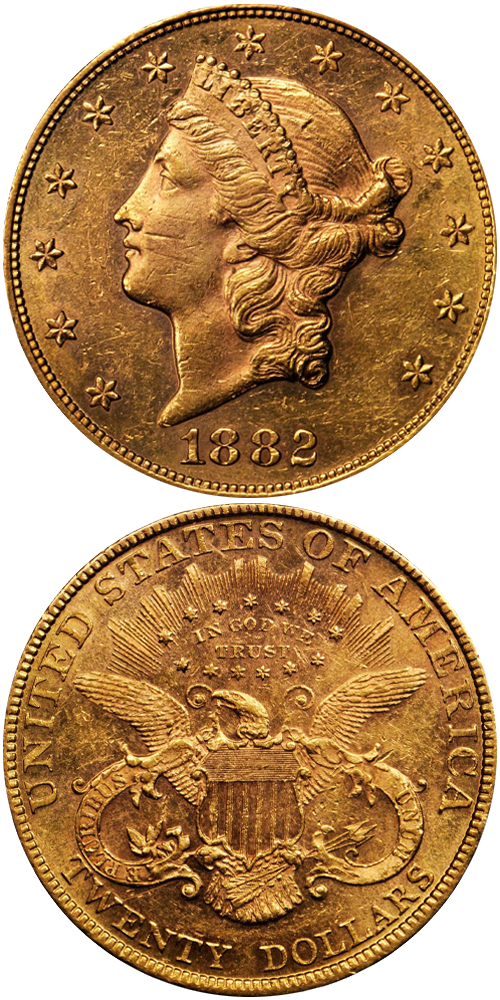1882 Liberty Head Double Eagle
Business Strike:
Beginning in 1881 and not ending until 1888, the Philadelphia Mint's output of double eagles was at best desultory, with several years seeing only Proof coins produced. The mintage of 571 pieces in 1882 stands as one of the lowest production figures for any gold coin intended for circulation, second only to the legendary 1861 Paquet Reverse issue. The few coins that were struck immediately entered circulation and were not saved by the numismatists of the era. At the time, collector preference tended towards obtaining Proof examples rather than circulation strike pieces, therefore most of the great collections assembled at the time do not contain an example of this date, to include the Smithsonian's majestic holdings. Garrett and Guth estimate 25 survivors in all grades, a figure that finds concordance with Q. David Bowers' estimate of 20 to 30 pieces. Any appearance by an 1882 double eagle is a noteworthy event and will certainly garner much attention by the double eagle collecting community.
Proof Strike:
Most surviving proof examples are clustered at the lower end of the Proof grading spectrum, often revealing light hairlines from less than careful handling. Very few approach the coveted Gem level regardless of cameo designation. As with all proof Double Eagles from the 1880s, attrition through melting of unsold examples was high for the 1882, and it is likely that only 12-15 coins can be traced today (this estimate is per Jeff Garrett and Ron Guth in the 2008 edition of the book Encyclopedia of U.S. Gold Coins: 1795-1933.) Most of the proofs from this era will display orange peel texture. Precisely how the dramatic "orange peel" effect was created on these early Proof coins has been subject to considerable speculation. Noted researcher John Dannreuther has discovered that the Proof coin planchets were first heated prior to striking, and this process helps to create the “orange peel”effect in the fields when the coins were struck. When examining the fields, notice how they appear as perfectly smooth as glass—yet also appear to have a texture that looks much like the surface of an orange peel. Some liken this to the appearance of sun baked dry mud that has cracked up into thousands of interlocking pieces. Most of the Proof gold, as well as other Proof coins, show the “orange peel” texture when closely examined, and this is part of the unique process created for the most visual impact on Proof coinage of this era.
The example to the left was sold by Stack's Bowers Galleries in the February 2015 Americana Auction, where it realized $49,937.






